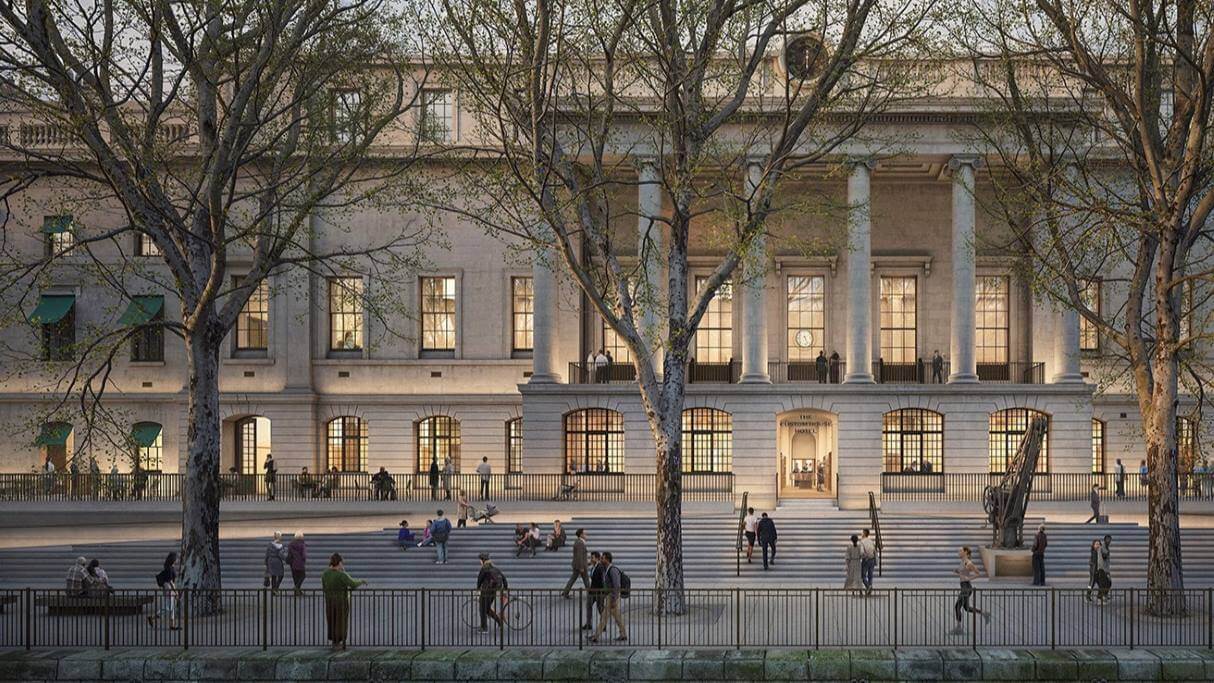
3 April, 2025
New plans submitted for Custom House redevelopment
Learn more
30 November, 2022 · 3 min read
As our City of Tomorrow campaign concludes, we are taking a look at London as a megacity in the future. Using research available, we have asked experts from across our business to reflect on London as the population hits 10 million, the demographic shift accompanying this, and the practical steps that need to be taken now to deliver sustainable growth.
In our second article, Partner and Head of Living, Kate Brennan, analyses a couple overseas mega cities and reflects on initiatives they use that can address the impacts of further population growth in London.
To truly understand a city, it is important to start with the foundations. The stories behind architecture, floor plans and design often create a lens through which we can glimpse its future.
Take the growth of loft living in New York as just one example. Originally, the area South of Houston Street in Manhattan was characterised by five-storey buildings with big windows and cast-iron frames, designed for industry and the best use of daylight. By the late 1950s, artists had found and inhabited those spaces, creating the neighbourhood known as SoHo. Now more than 70 years later, developers and designers are developing new versions of these well-adapted, historic spaces and successfully reusing buildings that would have previously been considered unfit for residential purposes – an approach so successful it is being replicated in urban living schemes across the world.
Throughout our major cities, where working and living co-exist, we are seeing many other examples of continuity and change. Some might be more successful than others, but all offer lessons for London as its population continues to increase and we reach megacity status [1]. The challenge, above all, is creating thoughtfully designed, affordable living spaces in ever-increasing numbers.
Hong Kong is a vibrant, colourful and contemporary place. With 7.5 million residents of various nationalities in a 426 sq mile territory, it is one of the world’s most densely populated places, as well as being a major global financial centre.
Historically, Hong Kong suffered from a critical shortage of housing which, as a result, caused house prices to soar. In 2020 it was named the world’s most expensive real-estate market, with average property prices of around HK$1.25 million [2]. At the same time, its minimum wage remains at the equivalent of £4.30 per hour [3]. According to a report by UBS, a “skilled worker” here must be earning for around 21 years to afford even an average (650 sq ft) centrally located apartment.
Roughly 7% of land in Hong Kong is zoned for housing (compared to 75% in New York City). This shortage has led to young people, the elderly, and families paying hundreds of pounds per month for less than 100 square feet of micro-living space, sometimes living in very poor conditions.
Property developers have responded to the demand for more affordable housing by increasingly designing floor plans into ever smaller units, a trend that took off in 2015 after the government loosened regulations requiring natural light and ventilation.
Even with more (albeit lower quality) space coming forward, its population’s social and psychological tolls have not gone unnoticed, with examples of high levels of stress and mental health concerns being well-documented.
This highly compact accommodation model has also resulted in a population who like to spend a significant amount of time outside –socialising in communal spaces, open-air exercise classes, shopping centres, tea houses and recreation centres.
All these things help to make Hong Kong a fabulous city, and a wonderful blend of old meets new, but for residents themselves, it is a precariously balanced trade-off, and I question the long-term success of this housing model.
From one city to another equally vibrant one – New York, too, faces population growth challenges. Already one of the world’s most densely packed urban spaces, with 10,724 people on average per sq km, its population reached a record high of 8,804,190 as of April 1, 2020.
Here, a number of initiatives are underway to address the impacts of further population surges that we could learn from in London.
For many megacities, social and environmental issues arise as a result of population growth. This includes issues around housing slums; crime; energy and material resources; homelessness and affordability; and traffic congestion, which significantly affect populations and their wellbeing.
Thinking about the future of London, we need to consider these challenges and learn these lessons. This means returning to the basics – who will live here, why will they choose to live here, and how will those needs and demands be met?
And then, we need to be more creative in finding and delivering new opportunities, with sustainability at their core. Sensible, regulated zoning and use of space must be coupled with intelligent, innovative design. Ultimately, the critical component for the success of any city is creating a sense of place that offers something meaningful for the people that occupy it at a given point in time.
So I will leave you with the rather ambitious plans of Neom, the 100-mile linear city in Saudi Arabia – costing an eye-watering $500 billion. This futuristic metropolis will have no cars, no streets and zero net carbon emissions. It will aim to accommodate one million people and comes with various high-tech and environmentally friendly design inputs. I will follow any progress with interest.
[1] Defined by the United Nations as a city which has a population of 10 million or more people, there are 37 megacities in the world, including Tokyo, New York, Hong Kong, Paris, Berlin, and Bangkok, among others.
[2] https://www.businessinsider.com/hong-kong-real-estate-market-agent-insight-2022-4?r=US&IR=T
[3] https://hongkongfp.com/2022/10/14/hong-kong-labour-union-says-hk40-minimum-wage-insufficient-proposes-increase-to-hk46/

12 February, 2025
Learn more

20 August, 2024
by Lucy Markham
Learn more

8 August, 2024
by Guy Bransby
Learn more